I’ve just finished the fourth and last installment in Conn Iggulden’s epic novelization of the life of Julius Caesar. I enjoyed them. It’s an epic tale, and can only be told in epic form.
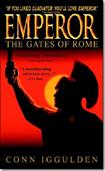 The Gates of Rome tells the story of Julius’ childhood. It begins with his upbringing on an estate on the outskirts of Rome, the death of his father while he was quite young, and his adoption by his uncle Marius. It then tells of the death of Marius and Julius’ flight into exile after the conquest of Rome by Sulla, as well as his defiance of Sulla when Sulla ordered him to divorce his wife Cornelia – whose family were strong supporters of Marius. The book closes with Julius and his childhood friend, Marcus, both in exile from Rome and beginning their careers in the Roman army with the lowest officer rank – roughly equivalent to the modern rank of 2nd lieutenant.
The Gates of Rome tells the story of Julius’ childhood. It begins with his upbringing on an estate on the outskirts of Rome, the death of his father while he was quite young, and his adoption by his uncle Marius. It then tells of the death of Marius and Julius’ flight into exile after the conquest of Rome by Sulla, as well as his defiance of Sulla when Sulla ordered him to divorce his wife Cornelia – whose family were strong supporters of Marius. The book closes with Julius and his childhood friend, Marcus, both in exile from Rome and beginning their careers in the Roman army with the lowest officer rank – roughly equivalent to the modern rank of 2nd lieutenant.
 The Death of Kings picks up the stories of Julius and his childhood best friend Marcus as they serve in Roman legions in the field, a long way from Rome. A large part of novel follows Julius and his unit as they are dispatched in a galley to deliver a paymaster’s chest of gold to north Africa. The ship is attacked by pirates, Julius and the other officers are captured and held for ransom. Julius vows to the pirates that he will escape, track them down, and execute them – which he proceeds to do. Although not the ranking officer, by strength of will he becomes the leader of the captives. After being freed, and recruiting a force of volunteer soldiers, Caesar tracks the pirates down, kills them and retrieves not only the ransoms that had been paid, but a large hoard of gold stolen by the pirates. Caesar sails his captured ships into a Greek port and finds himself in the middle of a rebellion led by the Greek king Mithridates. Caesar organizes a military force from Roman settlers and retired veterans and defeats Mithridates while the “official” expedition dispatched by Rome dithers waiting for reinforcements. Learning that Sulla has died, the young Julius (now with a victory in the field to his credit) returns to Rome, brushes aside the opposition of the old supporters of Sulla and is recognized by the Senate with a commendation and promotion. He is reunited with his wife and his boyhood friend Marcus. He is then quickly elected Tribune. The book ends with Julius leading his troops under the command of Consuls Pompey and Crassus in fighting the slave rebellion of Spartacus. Before the rebellion is over, he is given orders by Pompey to take command in Spain and govern the Roman province there.
The Death of Kings picks up the stories of Julius and his childhood best friend Marcus as they serve in Roman legions in the field, a long way from Rome. A large part of novel follows Julius and his unit as they are dispatched in a galley to deliver a paymaster’s chest of gold to north Africa. The ship is attacked by pirates, Julius and the other officers are captured and held for ransom. Julius vows to the pirates that he will escape, track them down, and execute them – which he proceeds to do. Although not the ranking officer, by strength of will he becomes the leader of the captives. After being freed, and recruiting a force of volunteer soldiers, Caesar tracks the pirates down, kills them and retrieves not only the ransoms that had been paid, but a large hoard of gold stolen by the pirates. Caesar sails his captured ships into a Greek port and finds himself in the middle of a rebellion led by the Greek king Mithridates. Caesar organizes a military force from Roman settlers and retired veterans and defeats Mithridates while the “official” expedition dispatched by Rome dithers waiting for reinforcements. Learning that Sulla has died, the young Julius (now with a victory in the field to his credit) returns to Rome, brushes aside the opposition of the old supporters of Sulla and is recognized by the Senate with a commendation and promotion. He is reunited with his wife and his boyhood friend Marcus. He is then quickly elected Tribune. The book ends with Julius leading his troops under the command of Consuls Pompey and Crassus in fighting the slave rebellion of Spartacus. Before the rebellion is over, he is given orders by Pompey to take command in Spain and govern the Roman province there.
 The Field of Swords opens with Julius in Spain. His wife has died, he’s depressed, and his friends and officers are worried about him. A romantic liaison with the Roman courtesan Servilia (who is the mother of his friend Marcus Brutus) revives him, finding a statue in Spain dedicated to Alexander the Great inspires him. At the end of his term of service in Spain he returns to Rome and becomes a candidate for the office of Consul. When he is elected, he forms an alliance with Pompey and Crassus, called the “Triumvirate.” In return for supporting their interests in the Senate he asks for, and receives, a commission at the end of his term as Consul, to take command of a Roman army and conquer Gaul. The second half of the book races through Caesar’s ten year conquest of Gaul (and Britain). As the book ends, Caesar receives word that Crassus has been killed leading a Roman army in the east against the Parthians. Caesar has finished the conquest of Gaul and is resolved to return to Rome and rule the city. In violation of Roman law, he leads his army without the Senate’s permission back into Italy, and crosses the Rubicon as he heads for Rome.
The Field of Swords opens with Julius in Spain. His wife has died, he’s depressed, and his friends and officers are worried about him. A romantic liaison with the Roman courtesan Servilia (who is the mother of his friend Marcus Brutus) revives him, finding a statue in Spain dedicated to Alexander the Great inspires him. At the end of his term of service in Spain he returns to Rome and becomes a candidate for the office of Consul. When he is elected, he forms an alliance with Pompey and Crassus, called the “Triumvirate.” In return for supporting their interests in the Senate he asks for, and receives, a commission at the end of his term as Consul, to take command of a Roman army and conquer Gaul. The second half of the book races through Caesar’s ten year conquest of Gaul (and Britain). As the book ends, Caesar receives word that Crassus has been killed leading a Roman army in the east against the Parthians. Caesar has finished the conquest of Gaul and is resolved to return to Rome and rule the city. In violation of Roman law, he leads his army without the Senate’s permission back into Italy, and crosses the Rubicon as he heads for Rome.
 In The Gods of War, Pompey flees from Rome, with many members of the Senate and their families accompanying him and goes to Greece to assemble the Roman troops into an army to defeat Julius. Julius takes possession of Rome, is elected Consul, and quickly leaves with an army for Greece to find Pompey and defeat him. Julius wins the ensuing battle and Pompey flees from Greece to Egypt. Julius pursues, Pompey is killed, and Cleopatra has herself smuggled into Julius’ camp where they promptly fall in love. He was 50, she was 21. One year later, after the birth of his son by Cleopatra (whom they named Caesar Ptolemy), Caesar returns to Rome. Cleopatra and his friend Marcus Brutus accompany him. After seeing his veteran soldiers mustered out and rewarded, Caesar wishes to be named king and to found a dynasty. The Senate, joined by Marcus Brutus, have had enough and Caesar is murdered on March 15, 44BC.
In The Gods of War, Pompey flees from Rome, with many members of the Senate and their families accompanying him and goes to Greece to assemble the Roman troops into an army to defeat Julius. Julius takes possession of Rome, is elected Consul, and quickly leaves with an army for Greece to find Pompey and defeat him. Julius wins the ensuing battle and Pompey flees from Greece to Egypt. Julius pursues, Pompey is killed, and Cleopatra has herself smuggled into Julius’ camp where they promptly fall in love. He was 50, she was 21. One year later, after the birth of his son by Cleopatra (whom they named Caesar Ptolemy), Caesar returns to Rome. Cleopatra and his friend Marcus Brutus accompany him. After seeing his veteran soldiers mustered out and rewarded, Caesar wishes to be named king and to found a dynasty. The Senate, joined by Marcus Brutus, have had enough and Caesar is murdered on March 15, 44BC.
The four novels together comprise a biography of Julius Caesar that runs to 2,000+ pages. And though Iggulden has taken a number of liberties with the historical facts, at the end of the day he seems to have captured the fascinating, multi-dimensional character of Caesar. There have been only a handful of men with his gifts of leadership, his strategic and tactical skills, and the luck to accomplish the territorial conquests he achieved. In many ways, though he was never an “Emperor,” Julius must be credited with the founding of the Empire. His great-nephew and adopted heir, Octavian succeeded in being named “Emperor” just 18 years after Julius’ death.
These are definitely adult novels. Though there is nothing salacious, there is much material that is by definition adult in nature – and lots of gore and battle scenes. Julius’ life (and his own writings) is far too rich to be contained by anything smaller. Iggulden succeeds in presenting a 3-dimensional portrait of Caesar that will make him understandable (if not entirely admirable) for modern audiences.
The novelization of Caesar’s life will not appeal to all tastes, but if you have any interest in ancient history, ancient Rome, or Julius Caesar, I think you will find these four volumes well worth your while.
– Rob Shearer
Directory, Schaeffer Study Center
Publisher, Greenleaf Press


 There is a marvelous pop-up Egyptian boat.
There is a marvelous pop-up Egyptian boat. Complete with a shaduff on-shore, showing how the Egyptians raised water from the Nile for irrigation.
Complete with a shaduff on-shore, showing how the Egyptians raised water from the Nile for irrigation. There is the warrior-Pharaoh Rameses II in his fighting chariot at the battle of Kadesh.
There is the warrior-Pharaoh Rameses II in his fighting chariot at the battle of Kadesh. There is a wonderful 3-D depiction of Hatshepsut’s temple at Deir el-Bahri
There is a wonderful 3-D depiction of Hatshepsut’s temple at Deir el-Bahri

 The entire connected scene folds out to four feet long.
The entire connected scene folds out to four feet long.
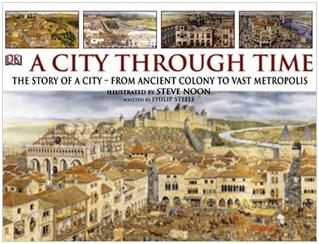 The second DK book is constructed on the same pattern as
The second DK book is constructed on the same pattern as 
 Like the
Like the 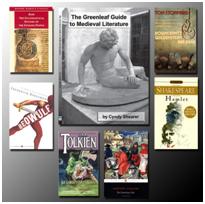


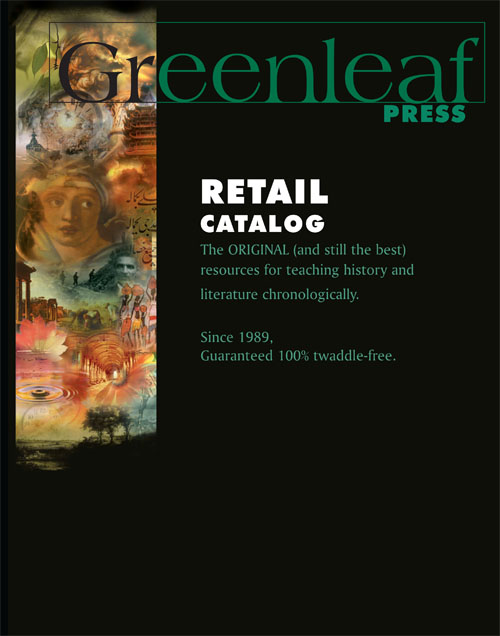
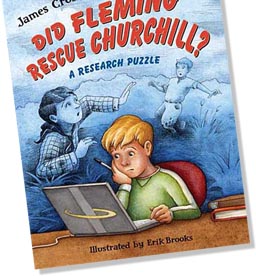






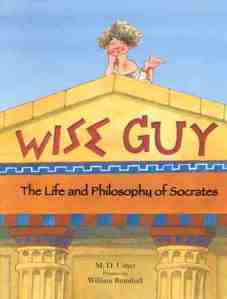
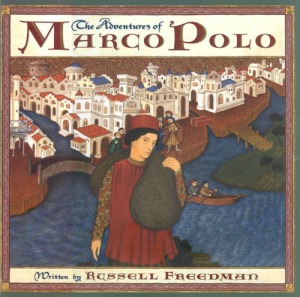
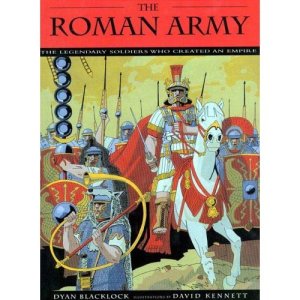
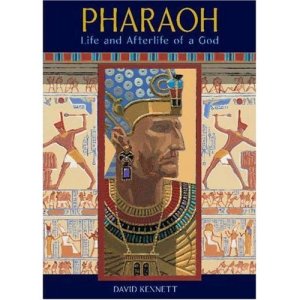
 The Gates of Rome tells the story of Julius’ childhood. It begins with his upbringing on an estate on the outskirts of Rome, the death of his father while he was quite young, and his adoption by his uncle Marius. It then tells of the death of Marius and Julius’ flight into exile after the conquest of Rome by Sulla, as well as his defiance of Sulla when Sulla ordered him to divorce his wife Cornelia – whose family were strong supporters of Marius. The book closes with Julius and his childhood friend, Marcus, both in exile from Rome and beginning their careers in the Roman army with the lowest officer rank – roughly equivalent to the modern rank of 2nd lieutenant.
The Gates of Rome tells the story of Julius’ childhood. It begins with his upbringing on an estate on the outskirts of Rome, the death of his father while he was quite young, and his adoption by his uncle Marius. It then tells of the death of Marius and Julius’ flight into exile after the conquest of Rome by Sulla, as well as his defiance of Sulla when Sulla ordered him to divorce his wife Cornelia – whose family were strong supporters of Marius. The book closes with Julius and his childhood friend, Marcus, both in exile from Rome and beginning their careers in the Roman army with the lowest officer rank – roughly equivalent to the modern rank of 2nd lieutenant. The Death of Kings picks up the stories of Julius and his childhood best friend Marcus as they serve in Roman legions in the field, a long way from Rome. A large part of novel follows Julius and his unit as they are dispatched in a galley to deliver a paymaster’s chest of gold to north Africa. The ship is attacked by pirates, Julius and the other officers are captured and held for ransom. Julius vows to the pirates that he will escape, track them down, and execute them – which he proceeds to do. Although not the ranking officer, by strength of will he becomes the leader of the captives. After being freed, and recruiting a force of volunteer soldiers, Caesar tracks the pirates down, kills them and retrieves not only the ransoms that had been paid, but a large hoard of gold stolen by the pirates. Caesar sails his captured ships into a Greek port and finds himself in the middle of a rebellion led by the Greek king Mithridates. Caesar organizes a military force from Roman settlers and retired veterans and defeats Mithridates while the “official” expedition dispatched by Rome dithers waiting for reinforcements. Learning that Sulla has died, the young Julius (now with a victory in the field to his credit) returns to Rome, brushes aside the opposition of the old supporters of Sulla and is recognized by the Senate with a commendation and promotion. He is reunited with his wife and his boyhood friend Marcus. He is then quickly elected Tribune. The book ends with Julius leading his troops under the command of Consuls Pompey and Crassus in fighting the slave rebellion of Spartacus. Before the rebellion is over, he is given orders by Pompey to take command in Spain and govern the Roman province there.
The Death of Kings picks up the stories of Julius and his childhood best friend Marcus as they serve in Roman legions in the field, a long way from Rome. A large part of novel follows Julius and his unit as they are dispatched in a galley to deliver a paymaster’s chest of gold to north Africa. The ship is attacked by pirates, Julius and the other officers are captured and held for ransom. Julius vows to the pirates that he will escape, track them down, and execute them – which he proceeds to do. Although not the ranking officer, by strength of will he becomes the leader of the captives. After being freed, and recruiting a force of volunteer soldiers, Caesar tracks the pirates down, kills them and retrieves not only the ransoms that had been paid, but a large hoard of gold stolen by the pirates. Caesar sails his captured ships into a Greek port and finds himself in the middle of a rebellion led by the Greek king Mithridates. Caesar organizes a military force from Roman settlers and retired veterans and defeats Mithridates while the “official” expedition dispatched by Rome dithers waiting for reinforcements. Learning that Sulla has died, the young Julius (now with a victory in the field to his credit) returns to Rome, brushes aside the opposition of the old supporters of Sulla and is recognized by the Senate with a commendation and promotion. He is reunited with his wife and his boyhood friend Marcus. He is then quickly elected Tribune. The book ends with Julius leading his troops under the command of Consuls Pompey and Crassus in fighting the slave rebellion of Spartacus. Before the rebellion is over, he is given orders by Pompey to take command in Spain and govern the Roman province there. The Field of Swords opens with Julius in Spain. His wife has died, he’s depressed, and his friends and officers are worried about him. A romantic liaison with the Roman courtesan Servilia (who is the mother of his friend Marcus Brutus) revives him, finding a statue in Spain dedicated to Alexander the Great inspires him. At the end of his term of service in Spain he returns to Rome and becomes a candidate for the office of Consul. When he is elected, he forms an alliance with Pompey and Crassus, called the “Triumvirate.” In return for supporting their interests in the Senate he asks for, and receives, a commission at the end of his term as Consul, to take command of a Roman army and conquer Gaul. The second half of the book races through Caesar’s ten year conquest of Gaul (and Britain). As the book ends, Caesar receives word that Crassus has been killed leading a Roman army in the east against the Parthians. Caesar has finished the conquest of Gaul and is resolved to return to Rome and rule the city. In violation of Roman law, he leads his army without the Senate’s permission back into Italy, and crosses the Rubicon as he heads for Rome.
The Field of Swords opens with Julius in Spain. His wife has died, he’s depressed, and his friends and officers are worried about him. A romantic liaison with the Roman courtesan Servilia (who is the mother of his friend Marcus Brutus) revives him, finding a statue in Spain dedicated to Alexander the Great inspires him. At the end of his term of service in Spain he returns to Rome and becomes a candidate for the office of Consul. When he is elected, he forms an alliance with Pompey and Crassus, called the “Triumvirate.” In return for supporting their interests in the Senate he asks for, and receives, a commission at the end of his term as Consul, to take command of a Roman army and conquer Gaul. The second half of the book races through Caesar’s ten year conquest of Gaul (and Britain). As the book ends, Caesar receives word that Crassus has been killed leading a Roman army in the east against the Parthians. Caesar has finished the conquest of Gaul and is resolved to return to Rome and rule the city. In violation of Roman law, he leads his army without the Senate’s permission back into Italy, and crosses the Rubicon as he heads for Rome. In The Gods of War, Pompey flees from Rome, with many members of the Senate and their families accompanying him and goes to Greece to assemble the Roman troops into an army to defeat Julius. Julius takes possession of Rome, is elected Consul, and quickly leaves with an army for Greece to find Pompey and defeat him. Julius wins the ensuing battle and Pompey flees from Greece to Egypt. Julius pursues, Pompey is killed, and Cleopatra has herself smuggled into Julius’ camp where they promptly fall in love. He was 50, she was 21. One year later, after the birth of his son by Cleopatra (whom they named Caesar Ptolemy), Caesar returns to Rome. Cleopatra and his friend Marcus Brutus accompany him. After seeing his veteran soldiers mustered out and rewarded, Caesar wishes to be named king and to found a dynasty. The Senate, joined by Marcus Brutus, have had enough and Caesar is murdered on March 15, 44BC.
In The Gods of War, Pompey flees from Rome, with many members of the Senate and their families accompanying him and goes to Greece to assemble the Roman troops into an army to defeat Julius. Julius takes possession of Rome, is elected Consul, and quickly leaves with an army for Greece to find Pompey and defeat him. Julius wins the ensuing battle and Pompey flees from Greece to Egypt. Julius pursues, Pompey is killed, and Cleopatra has herself smuggled into Julius’ camp where they promptly fall in love. He was 50, she was 21. One year later, after the birth of his son by Cleopatra (whom they named Caesar Ptolemy), Caesar returns to Rome. Cleopatra and his friend Marcus Brutus accompany him. After seeing his veteran soldiers mustered out and rewarded, Caesar wishes to be named king and to found a dynasty. The Senate, joined by Marcus Brutus, have had enough and Caesar is murdered on March 15, 44BC.